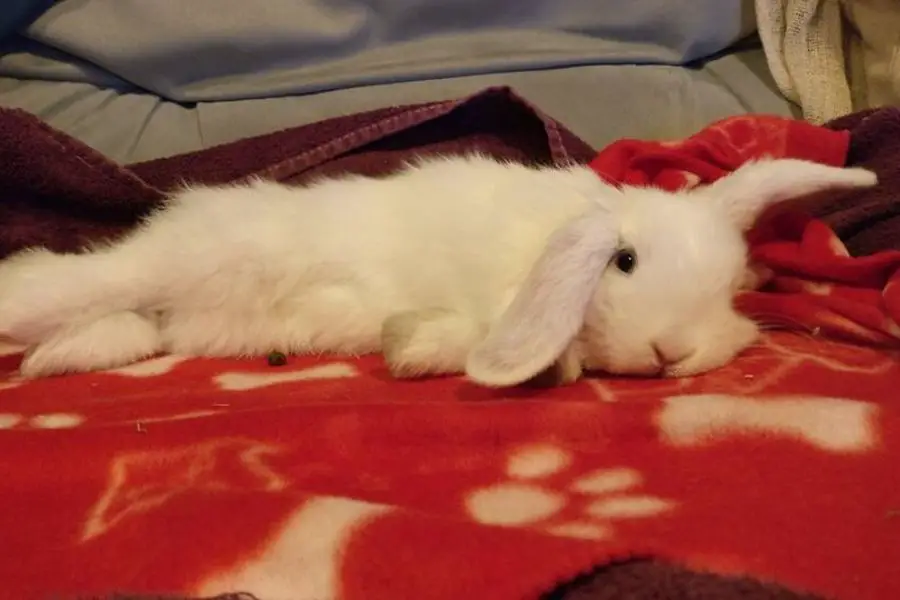Have you ever paused to wonder, “Do rabbits sleep in dark or light?” It’s a fascinating question, isn’t it? Unraveling the sleep habits of these adorable creatures can provide valuable insights into their care and well-being.
Rabbits, being crepuscular animals, tend to sleep during the day and night, avoiding both complete darkness and bright light. Their peak activity occurs around dusk and dawn.
Introduction
In this blog post, we’re diving deep into the nocturnal and diurnal habits of rabbits. We’re going to explore their natural sleep patterns, investigate the impact of light and dark, and understand how their environment influences their rest.

From debunking myths to providing practical advice for your pet rabbit’s comfort, we’ve got all the bunny sleep trivia you need.
And we’re not stopping at just light and dark; we’re also delving into the effect of noise, temperature, and safety on a rabbit’s sleep environment.
Finally, we’ll answer some frequently asked questions about rabbit sleep. It’s a whole world of bunny snooze habits, just waiting to be discovered!
Do Rabbits Sleep in the Dark or Light?
How Darkness Influences the Sleep Cycle of Rabbits
One might naturally assume that, like humans, rabbits would prefer to sleep in the dark. Indeed, darkness does have a role in a rabbit’s sleep cycle.
When the sun sets, and the world quiets down, rabbits often settle in for a period of rest. The reduced light signals to their bodies that it’s a good time to take a break from their energetic bouncing and hopping.
However, that’s not the whole story. Rabbits don’t fully fall asleep in the way humans do. Instead, they enter a state of dozing, always alert to potential threats.

Even in the dark, their ears remain tuned to their surroundings. So while darkness might signal a time for rest, it doesn’t mean deep sleep for our rabbit friends.
The Impact of Light on Rabbit Sleep Habits
When we think of daytime, we might picture rabbits frolicking around, right? After all, plenty of daylight means it’s time to be active!
Well, in reality, rabbits also use daylight hours for rest. When the sun is high in the sky, our furry friends often take advantage of the warm light to doze off.
That said, just like in the darkness, rabbits don’t fall into a deep sleep during daylight hours. They stay in a light sleep state, always alert to the sounds and movements around them.
This light dozing allows rabbits to remain vigilant for any potential dangers, even while they’re catching some z’s.
Finding the Sweet Spot: Dusk and Dawn
So, if rabbits doze in both darkness and light, what’s their preferred time for sleep? The answer lies in the twilight hours – dawn and dusk.
Being crepuscular, rabbits are most active during these periods of soft light. This is when they exhibit the most energy, foraging for food and hopping about with gusto.
Post this burst of activity, they settle down for a well-deserved rest, ready to repeat the cycle when the next twilight hour comes around.
This pattern shows us that it’s not so much a matter of dark or light, but rather the in-between periods that play a crucial role in a rabbit’s sleep cycle.

Understanding these intriguing sleep habits of rabbits helps us appreciate the adaptations they’ve made to stay safe in their environment.
It offers insight into their unique lifestyle, guiding us to provide the best care possible for our fluffy companions.
The Role of the Rabbit’s Environment
Influence of Natural Habitats on Rabbit Sleep Patterns
Rabbits in the wild have honed their sleep habits over millennia to adapt to their surroundings. In natural environments, rabbits are typically burrowers. They create complex systems of tunnels and chambers, known as warrens, for safety and comfort.
This underground lifestyle naturally provides periods of darkness and quiet, which are ideal for resting.
However, rabbits don’t just sleep in these burrows. They also venture out during the day and night, using the safety of their warrens as a base.
So, while they may rest during both dark and light periods, they are always alert to the sounds and potential threats in their environment.
The Impact of Domestic Settings on Rabbit Sleep Patterns
Moving to the realm of domestic rabbits, we find a different picture. Domestic rabbits don’t have the same access to burrow systems as their wild counterparts, but they still retain their natural sleep habits.
Pet rabbits may choose a quiet, secluded corner of their enclosure for rest. This could be a designated rabbit house, a box, or a hidden corner behind furniture.

The important point here is that your pet rabbit’s environment should mirror its natural habitat as much as possible.
Domestic rabbits need a place to hide and feel safe, just as they would have in a burrow in the wild. This familiarity helps them maintain their natural sleep patterns, ensuring they remain healthy and happy.
Lighting Conditions in a Rabbit’s Environment
For both wild and domestic rabbits, the presence of natural light can help regulate their sleep cycles. Sunlight’s rising and setting pattern gives a rhythm to their day, signaling when it’s time to be active or rest.
Hence, it’s beneficial for pet rabbits to be exposed to some natural light, but without forcing them into direct sunlight, which can be harmful.
Whether in the dark or light, rabbits have shown themselves to be incredibly adaptable creatures. Their sleep habits vary based on their surroundings, but their preference for periods of dawn and dusk remains constant.
As rabbit caretakers, understanding this intricate relationship between environment and sleep patterns is key to ensuring our furry companions lead comfortable lives.
How to Create a Comfortable Sleep Environment for Your Rabbit
Creating the Ideal Conditions for a Rabbit’s Sleeping Area
The first step in creating a comfortable sleep environment for your rabbit involves designating a quiet and safe area for rest.
Given their nature, rabbits tend to appreciate having a designated spot that mimics the seclusion of a burrow. A cozy, enclosed space like a rabbit house or a sheltered corner can offer your bunny the privacy it craves.
Alongside privacy, the bedding material in this area plays a crucial role in providing comfort. A soft layer of hay or straw can make a world of difference to your rabbit.
Not only does it offer a comfortable surface for them to rest on, but it also serves a dual purpose as a snack, given rabbits’ love for hay.
Adjusting Light in Your Rabbit’s Environment
Even in a domestic setting, respecting your rabbit’s natural affinity for crepuscular activity is crucial. This means allowing them exposure to natural light cycles as much as possible.
Consider placing their enclosure near a window where they can experience the soft light of dawn and dusk, but ensure they also have shade to protect them from intense midday sunlight.

Remember, rabbits need a balance of light and dark in their lives. While they should have some exposure to daylight, it’s also important to offer periods of darkness for rest.
Hence, avoid placing your rabbit’s habitat in direct, strong light or complete darkness all the time.
Noise, Temperature, and Safety Considerations
A serene environment is not just about light and bedding, it’s also about the overall ambiance. As much as possible, try to minimize loud noises around your rabbit’s sleeping area.
Rabbits are naturally skittish, and loud noises can cause unnecessary stress.
Temperature, too, plays a part in your rabbit’s comfort. Rabbits can’t sweat, and they can become overheated in high temperatures. Therefore, always ensure your rabbit’s environment remains cool and well-ventilated.
Lastly, safety is paramount. Your rabbit should feel secure in its sleep environment. The space should be free from potential threats, like other pets or young children, which might disturb or stress the rabbit.
By addressing all these elements – light, privacy, comfort, noise, temperature, and safety – you can create an environment that supports your rabbit’s natural sleep habits.
Ensuring your pet feels safe and relaxed goes a long way towards their overall health and happiness, making these steps an essential part of responsible rabbit care.
Conclusion
In the delightful world of rabbits, sleep habits form a compelling narrative, weaving together their wild instincts and domestic lifestyle.
Understanding these patterns opens the door to providing exceptional care for our adorable companions.
We’ve journeyed through the ways light and darkness, alongside environmental factors, shape the way rabbits rest.
More than just facts, these insights are a testament to the fascinating adaptability of these creatures.
As rabbit enthusiasts, we’re constantly learning, evolving our understanding of these lovable creatures.
Let’s take this knowledge forward, ensuring our bunny buddies always have the best conditions for a cozy nap. After all, a well-rested rabbit is a happy rabbit, and isn’t that what we all want for our furry friends?
Frequently Asked Questions
How many hours a day do rabbits sleep?
Rabbits typically sleep around 6 to 8 hours a day, often during daylight hours and in segments rather than a continuous period.
Do rabbits close their eyes when they sleep?
Sometimes rabbits sleep with their eyes open to stay alert for potential threats, but they may close their eyes when they feel safe and comfortable.
Can I adjust my rabbit’s sleep schedule?
It’s not recommended to try and alter a rabbit’s natural sleep cycle. Rabbits are crepuscular and will naturally be most active during twilight hours.
How can I tell if my rabbit is sleeping or just resting?
Rabbits often sleep lightly with their eyes open. If your rabbit is relaxed, with its nose not twitching and its ears at rest, it’s likely sleeping.
Is it bad for my rabbit to sleep in my bed?
Although it may seem cozy, it’s generally unsafe for rabbits to sleep in human beds due to the risk of falls or accidental injury.

